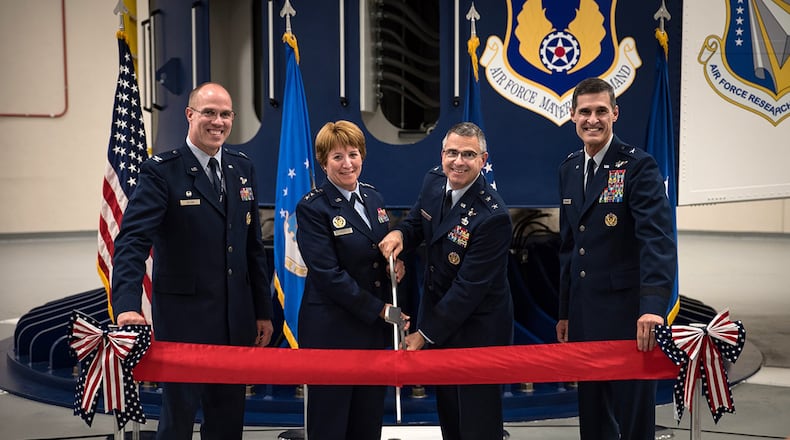The equipment allows students to experience up to 9 Gs, or nine times the normal force of gravity, to teach the effects of G-forces on human physiology and to measure the student’s ability to counteract the effects in effort to prevent G-induced loss of consciousness.
“A device such as this is needed now more than ever,” said Brig. Gen. Mark Koeniger, 711th Human Performance Wing commander, who presided over the event. “With the extreme performance that is possible in our aircraft today, it is paramount that we provide the best training possible for these aircrew members. This centrifuge will do just that.”
Air Force students will begin using this centrifuge for training beginning Oct. 1. Approximately 1,200 Air Force students – including fighter pilots, aircrew members, flight surgeons, aerospace physiologists and others – are expected to receive training per year.
The centrifuge has a unique capability, explained Koeniger. All three cockpits can be linked with the control room to create a virtual battle space.
Col. Alden Hilton, United States Air Force School of Aerospace Medicine commander, provided opening remarks and stated that he had been in two centrifuges – one at Holloman Air Force Base, New Mexico, and the other at Brooks City Base, Texas.
“I’ll just say that centrifuge training – is a necessary evil,” he said, which invoked laughter from the audience that included Air Force Surgeon General Lt. Gen. Dorothy Hogg and Air Force Research Laboratory Commander Maj. Gen. William Cooley.
Hilton commended the Airmen responsible for getting the centrifuge ready, presenting each of them with a USAFSAM centennial coin.
USAFSAM, which is part of the 711 HPW and the Air Force Research Laboratory, was established in 1918 and is the premier institute for education, research and worldwide operational consultation in aerospace and operational medicine. USAFSAM has been a leader in the field of aerospace medicine and human performance from the beginnings of aviation through the onset of the space age and into the present.
“We are 100 percent committed to using this extraordinary training and research device to keep aircrew safe, advance science and develop technologies that keep our Soldiers, Sailors, Airmen and Marines the most capable fighting force in the world,” Koeniger said.
About the Author
